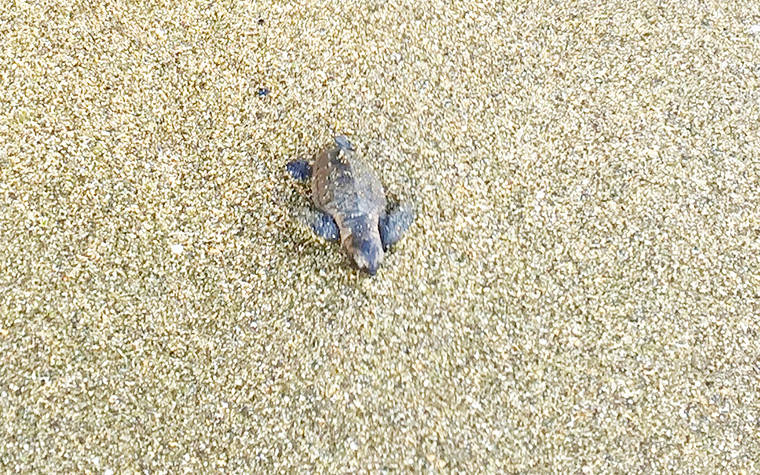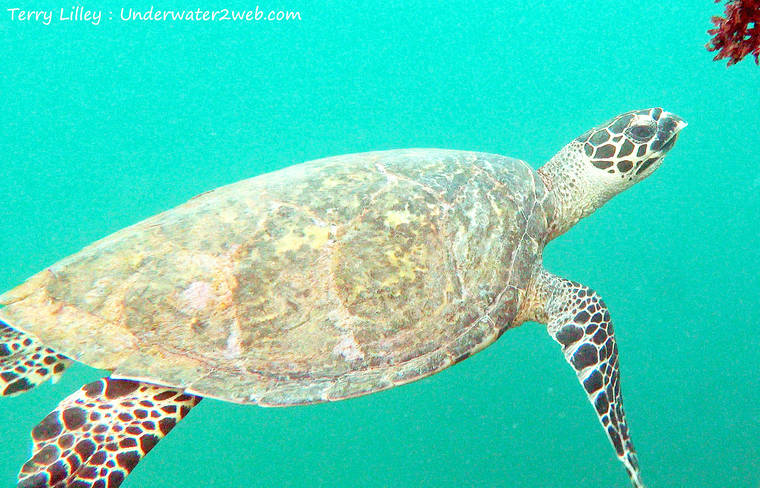HAENA — A hawksbill turtle hatching has been confirmed on the North Shore’s Wainiha Beach, a rare occurrence that’ll add to the Hawaiian population of the critically endangered species.
These turtles landed on the endangered species list due to overharvest of their shells, according to the National Oceanic and Atmospheric Administration and Hawaiian Hawksbill Conservation, the entity that runs the statewide photo-ID catalog of Hawaiian hawksbill turtles.
NOAA estimates there are only 20 to 25 females nesting annually on Hawaii.
Their population isn’t bouncing back as fast as the endangered green sea turtle’s. NOAA’s recovery plan for the U.S. Pacific populations of the hawksbill turtle says their approach to extinction is being driven by “intentional harvest of the species for meat, eggs and the tortoiseshell and stuffed curio trade (curiosity or souvenir trade).”
Increasing human populations and the concurrent destruction of the habitat are also of major concern for the Pacific hawksbill populations.
In December, marine photographer and videographer Terry Lilley received photos of a few new hatchlings. He wasn’t sure, but thought they were hawksbill babies.
“They do look like hawksbills, but I have never seen a baby hawksbill myself,” he said. “It would be pretty amazing if the sea turtles now come back to Kauai’s North Shore to lay eggs since the beaches are deserted.”
Lilley sent the pictures to Cheryl King at Hawaiian Hawksbill Conservation and to independent turtle scientist George Balazs. Both confirmed they were indeed hawksbills.
“It is very exciting that nesting has been found at Wainiha,” King said in her confirmation of the photos. “It’d be awesome for the community to start a monitoring program.”
Balazs said the major known nesting places for these turtles are on Hawaii Island, Maui and Molokai. A few nests are on Oahu. He also said their nests can be hard to find.
“It’s my suspicion that there’s more hawksbill nesting on Kauai than what we as humans know about,” Balazs said. “That’s because of the hawksbill’s low-impact, low-visibility nesting behavior when compared to green turtles. And, in a number of ways, that’s good.”
Balazs works on data-mapping for the NOAA Marine Turtle Research Program. The project catalogues and maps out nesting and basking trends of green sea turtles and hawksbills across the Hawaiian islands. They’ve only recorded one nesting area on Kauai, in Wailua.
This documentation adds a second hawksbill nesting site to that map.
Tom Woods of Reef Guardians Hawaii was encouraged when he saw the hatchling photos as well.
“Last time that I saw a hawksbill on the North Shore of Kauai was about five years ago at Anini,” he said.
•••
Jessica Else, environment reporter, can be reached at 245-0452 or jelse@thegardenisland.com.






Hoh bettah close down da Road!